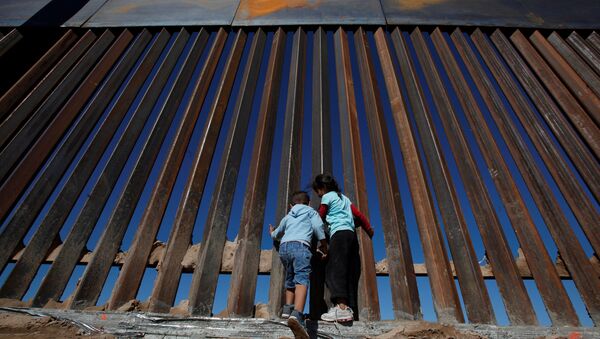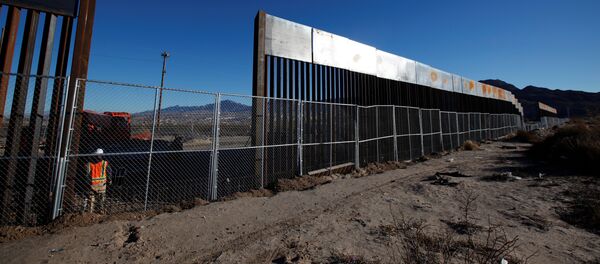"In terms of climate adaptation, building a border wall is an act of self-sabotage," says Dan Millis, a program manager with the Sierra Club's Borderlands project.
While Trump never said specifically what kind of wall he wanted to build, Bloomberg New Energy Finance made a calculation based on a steel-reinforced concrete wall 1,000 miles long, 35ft high and 18 inches thick.
Cement production is indeed a process connected with carbon dioxide emissions; the rough approximation of CO2 emission can be counted as nine parts of CO2 per 10 parts of cement. However, the United States is far from being the biggest contributor.
According to US Geological Survey statistics, in 2012, the United States produced about 74 million tons of cement (we can assume about 66.4 million tons of carbon dioxide were emitted in process). However, that figure looks very modest when compared to the 250 million tons of cement produced in India that year, and even more so if compared to 2,150 million tons produced in China.
In fact, the United States produces about the same amount of cement as Brazil, Vietnam, Iran, Russia, Turkey and Japan; all of the abovementioned states produced more than 50 million tons of cement in 2012.
"If President Trump was as concerned about our nation's true national security issues, he would be tackling climate change head-on while safeguarding refugees and immigrants from the worst impacts of a warming planet and ongoing turbulence in their homelands," says Gene Karpinski, president of the League of Conservation Voters.
Judging by Trump's recent meeting with US business leaders, during which he expressed his intent to cut regulations by 70%, including environmental regulations that impede domestic US productions, Karpinski's sentiment sounds like exactly the opposite of what Trump is going to do.
Another argument of environmental activists regards animal migration routes. The construction of a concrete wall (which will likely go some distance into the sea) will affect the migration routes of animals that live both in Mexico and southern parts of the United States.
"We're already seeing wildlife migrations blocked with the current walls and fences that have already been built. We have hundreds of these walls that were built without dozens of environmental protections," says Millis.
Replying to OutsideOnline.com's query, the US Fish and Wildlife Service responded by saying the construction of the wall will "potentially impact" 111 endangered species, which include gray wolves, sea turtles and the only one sole jaguar living on the US territory (and known as "El Jefe"). In fact, jaguars' range spans from Mexico to Paraguay and north of Argentina. El Jefe is really a hermit in this regard.
As for the gray wolves, the situation is reverse: while they lived in US and Mexico earlier, they were nearly exterminated in the United States during first half of the 20th century. Efforts to restore wolf populations in some of their native hunting grounds have had mixed success.
Thus, the assessment of US Fish and Wildlife Service clearly needs a more thorough examination.




